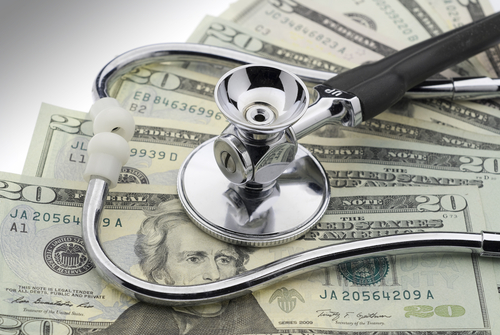Employers already spend more on healthcare than anything else aside from salaries – and cancer makes up the largest portion of those healthcare costs. Today, cancer costs account for nearly 3% of U.S. GDP. That is almost as much as the U.S. spends on defense.
The American Cancer Society recently released its annual Facts & Figures report, showing rates of cancer incidence rising for six of the ten most common cancers, with an alarming rate of cancer in people under the age of 50. So it’s understandable that employers are bracing for an increase in healthcare costs up to 8.5% this year – the largest jump in a decade. Frustratingly, rising costs don’t translate to more value – just higher prices for the same healthcare. To make up the difference, employees’ paychecks are taking the hit.
For employers and unions, who provide healthcare for almost half of the country, the burden of cancer costs is now a full blown crisis.
The Status Quo Isn’t Working Anymore
In a new report released this week, we get a better sense for how benefit leaders are thinking about addressing the human and financial cost of cancer.
Through a survey conducted by The Harris Poll, 250 HR and benefits leaders shared their main concerns and priorities for cancer care, potential gaps in traditional approaches, and perspectives on how they can continue to support their members throughout their cancer journeys.
What’s clear is employers are looking for new ways to address cancer in their workforce. In the survey, 96% of benefits leaders agreed that detecting cancer early is the best way to get ahead of rising costs and improve employee health outcomes. Many want to address cancer care further upstream but see the opposite in their spending reports – 88% of those surveyed would rather spend more on preventive care than post-diagnosis care/disease management, but 82% currently spend significantly more on the latter.
The report also highlights a gap in traditional approaches to screening and prevention. While most employers rely solely on their health plans to drive cancer screenings among their members, only one in four agrees that their plan is meeting the needs of their employees for screenings, and overall, just one in 10 benefits leaders believes insurance coverage provides key healthcare benefits to employees. Similarly, just 25% of those surveyed feel primary care providers are getting enough employees screened — meaning it’s not enough to rely on insurance coverage or primary care alone.
At the same time, employers agree it’s important to know their populations’ cancer screening rates — but most don’t. Half of employers have to go out of their way to request screening rate information from their health plan or a third party. Only one in three receive proactive reports from their health plans about employee screening adherence. When it comes to screening rates for breast, lung, colorectal, prostate, and cervical cancers, which cause one in four cancer deaths, a mere 16% of benefits leaders say they have access to all five. If you don’t even know the ins and outs of the problem, how can you develop a proper solution?
Takeaways for Employers
In the past, cancer care has predominantly focused on what happens after the disease is diagnosed. A majority of funding and research efforts for cancer address new therapies, treatment innovations, and the search for a cure.
It’s clear that employers are shifting their focus. Many are viewing early cancer detection as one of the biggest – and most underutilized – opportunities to improve outcomes, reduce costs, and prevent thousands of people, including their employees, from dying of cancer.
Ultimately, the cancer cost crisis amounts to more than a company’s bottom line. The lives of employees are at stake, and benefits leaders want to start off on the right foot to ensure support at every step of a cancer journey.
Othman Laraki is CEO at Color Health.


